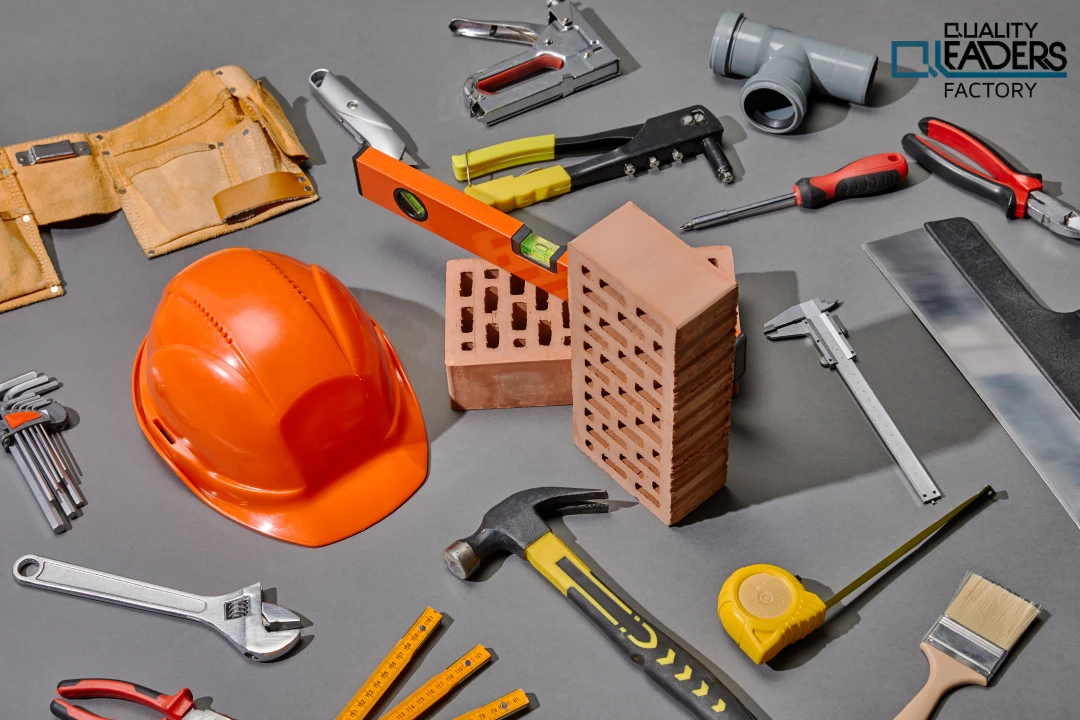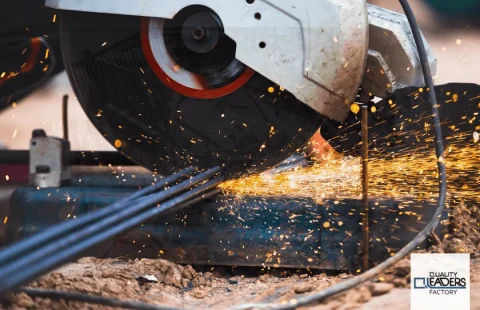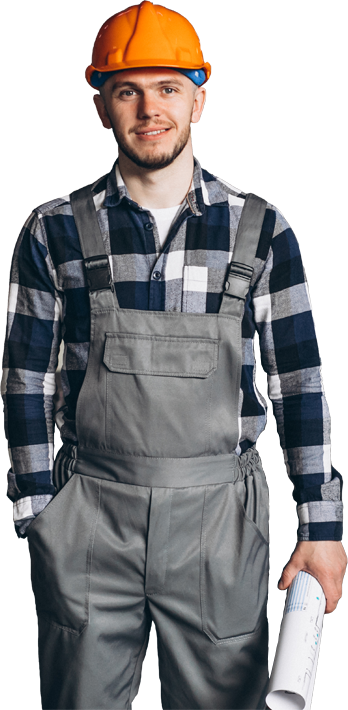
Comprehensive Guide to Modern Construction Tools and Their Uses
In construction, efficiency, accuracy, and safety are crucial for completing projects on time and within budget. Modern construction tools and equipment have significantly advanced in recent years, providing builders with the means to improve both the quality of their work and their project timelines. This guide will walk you through the top construction tools, their uses, and how they contribute to the success of any building project.
Modern Construction Tools
Measurement Tools
Accurate measurements are the backbone of any construction project. Here are essential measurement tools used in construction.
- Tape Measure: A flexible tool made from plastic or metal used to measure distances, lengths, and sizes.
- Measuring Wheel: Ideal for measuring long distances, this wheel rolls along the ground and provides precise measurements.
- Plumb Bob: A pointed weight that hangs from a string to check vertical alignment.
- Spirit Level: Used to check whether a surface is level, ensuring accuracy in horizontal or vertical planes.
- Line Level: This small tool ensures perfect alignment in tasks like bricklaying or tiling.
Cutting and Shaping Tools
Construction requires tools that cut and shape materials like wood, steel, and stone. Below are essential cutting tools.
- Hand Saw: A versatile tool for cutting wood manually.
- Circular Saw: An electric saw with a circular blade that cuts wood, steel, and other rigid materials.
- Chisel: Used to remove excess material from wood, metal, or stone surfaces.
- Tile Cutter: Designed for precise cutting of tiles, allowing them to fit into tight spaces.
- Utility Knife: Great for cutting materials such as drywall, fiberglass, and plastic.
Mixing and Pouring Tools
Creating consistent mixtures is essential in construction. These tools help to ensure uniform concrete and mortar applications.
- Concrete Mixer: A motorized tool that thoroughly mixes cement, sand, aggregates, and water.
- Masonry Trowel: A hand tool used to apply and shape mortar or plaster on walls.
- Head Pan: A sizeable bowl-like container used to carry concrete, sand, or debris on construction sites.
- Hoe: Used for mixing materials or spreading concrete and mortar in pans.
- Bucket Trowel: Ideal for scooping out materials like mortar from mixing containers.
Excavation and Digging Tools
Moving and shaping the ground requires specialized digging tools. Here are some must-have digging tools.
- Spade: Used for digging and moving dirt, a spade features a sharp blade.
- Digging Bar: A long metal tool used for breaking hard soil and digging holes.
- Pickaxe: Great for loosening and breaking up soil, concrete, or asphalt.
- Shovel: Perfect for moving large amounts of earth, sand, or debris.
- Crowbar: A long steel tool used for prying apart materials and removing nails.
Concrete Tools
Concrete work demands tools that allow builders to create smooth, durable surfaces. Below are concrete-specific tools.
- Wooden Float: Helps smoothen and level the surface of wet concrete.
- Bump Cutter: Ensures even and smooth concrete surfaces, particularly on slabs.
- Needle Vibrator: Vital for compacting concrete by removing air pockets during the pouring process.
- Rebound Hammer: Used to check the strength and quality of concrete.
- Concrete Sander: Smoothens rough surfaces and removes imperfections after concrete is applied.
Lifting and Carrying Tools
Construction projects require moving heavy materials across sites. These tools make lifting and transportation much more accessible.
- Wheelbarrow: Essential for moving materials like concrete or dirt from one place to another.
- Pulley: Used to lift heavy objects vertically on construction sites.
- Ladder: Helps workers reach higher areas during painting, masonry, or roofing.
- Rope: Used for hoisting or securing loads during lifting operations.
- Winch: A mechanical device for lifting or pulling heavy objects.
Safety Equipment
Personal safety is paramount on construction sites. These safety tools and gear ensure the well-being of workers.
- Safety Helmet: Protects the head from falling objects or accidental collisions.
- Gloves: Used to protect hands from sharp tools and hazardous materials.
- Safety Boots: Designed to protect feet from injury caused by falling objects or sharp debris.
- Ear Protection: Helps workers avoid hearing damage caused by loud machinery like drills and saws.
- Safety Belt: Worn when working at heights to prevent falls.
Power Tools
Modern construction heavily relies on power tools for efficiency. Here are some essential power tools you’ll find on construction sites.
- Power Drill: An electric tool used for drilling holes and driving screws into laborious materials.
- Jack Hammer: Ideal for breaking down concrete, asphalt, or brick surfaces.
- Angle Grinder: A handheld tool for cutting, grinding, and polishing materials like metal and stone.
- Blowtorch: Used for welding and cutting metals with extreme heat.
- Nail Gun: A powerful alternative to a hammer, it drives nails into wood or other materials with precision.
Finishing Tools
Finishing touches are what make a construction project look polished and professional. Here are the tools used for the final steps.
- Putty Knife: Used to apply putty or patchwork on walls and windows.
- Polisher: Smoothens and shines marble, granite, or concrete surfaces.
- Brush: A straight-edge brush helps create a neat finish on plastered walls and ceilings.
- Screed: Used to level out and smooth concrete surfaces before they set.
- Scratcher: Adds texture to plaster, improving the adhesion of the next coat.
Tools for Special Trades
Specific tools are specifically tailored for skilled trades, such as carpentry, plumbing, and electrical work.
- Adjustable Spanner: Used by plumbers to tighten or loosen pipes and fittings of varying sizes.
- Wrench: Commonly used for tightening or loosening nuts and bolts in carpentry and mechanics.
- Screwdriver: Every construction site requires both flathead and Phillips screwdrivers for fastening screws.
- Caulk Gun: Used to apply sealants that prevent water from entering small gaps or cracks.
- Welding Machine: Allows workers to fuse metal pieces using heat.
Portable Manufacturing Products Used in Construction
Some modern construction materials offer convenience and efficiency, particularly in the areas of insulation and pre-fabrication.
- Portable Cabins: These are mobile structures that can be transported and used as temporary offices or storage rooms on construction sites.
- Sandwich Panels: Lightweight panels made of two thin metal sheets sandwich panels insulating core are used for constructing walls and roofs.
- Steel Fibers: Added to concrete to improve its strength and durability, steel fibers help resist cracking and wear.
- Easy Wall Systems: Prefabricated easy wall systems that allow for quicker and more efficient construction of buildings.
Conclusion
Construction tools and portable manufacturing products have transformed the building industry, helping contracting company and workers complete projects more efficiently, safely, and to a higher standard of quality. From essential hand tools like hammers and wrenches to specialized power tools and modern prefabricated materials, each piece of equipment serves a unique purpose in ensuring the success of a construction project.
By understanding the role of each tool and product, builders can not only streamline their processes but also ensure they’re delivering a final product that meets high-quality standards while staying on schedule.



